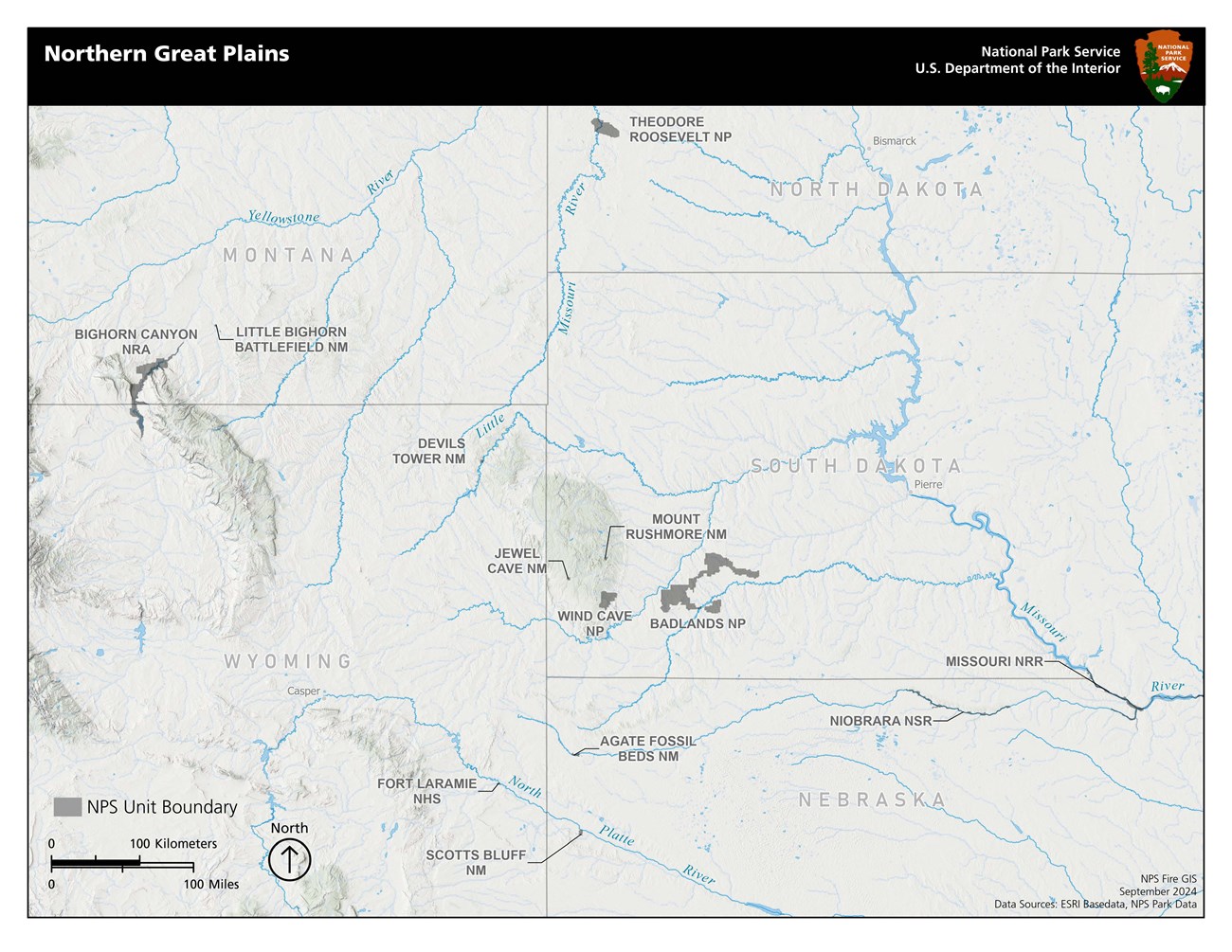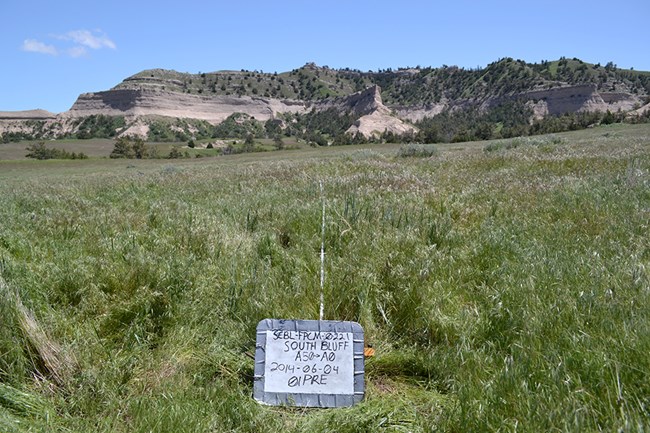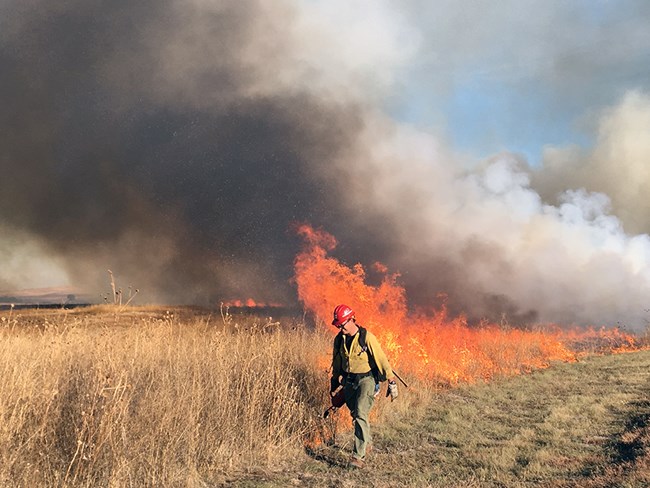Part of a series of articles titled Prairie Ecology of the Badlands.
Article
Northern Great Plains Annual Brome Adaptive Management Project

Fire effects monitoring data collected by the fire ecology program (NGPFire) for the past twenty years has shown limited effectiveness of prescribed fires alone on fighting non-native annual bromes. Prescribed fire generally reduces the abundance of cheatgrass and Japanese brome the first year or two after fire, but then the annual brome abundance returns to or exceeds pre-fire levels soon thereafter. Management and restoration of high quality, mixed-grass prairie to the NPS units has proved difficult and complex.

NPS
The Annual Brome Adaptive Management project (ABAM) is attacking this problem through a cooperative effort between NGPFire, the Rocky Mountain Inventory and Monitoring Networks (I&M), the Northern Rocky Mountain Exotic Plant Management Teams (EPMT), the fire management office for NGP, the USGS Northern Prairie Wildlife Research Center, and seven national park units.
ABAM has developed a structured adaptive management framework with three main objectives; reduce annual brome abundance within consortium parks; improve native vegetation conditions (native diversity and abundance) in the parks; and minimize management treatment costs.

NPS
A predictive model using twenty years of monitoring data recommends the most efficient and cost-effective management action for a management unit looking five years into the future. Management treatment options include prescribed fire as well as application of two herbicides. The model assesses the timing of the treatment options, as well as whether a better outcome is achieved using them independently or in concert with each other. Any time new prescribed fire or herbicide treatments are implemented to the units, subsequent monitoring data will be input into the model, which will affect the predicted vegetation conditions and desired management options.
Each year, after the model has incorporated the latest vegetation monitoring data, members from the team will assist and advise parks regarding future treatment options, taking into consideration the model outputs. This multi-faceted management approach gives the NPS the best chance to restore the mixed-grass prairie plant communities to high quality conditions.
Tags
- agate fossil beds national monument
- badlands national park
- devils tower national monument
- fort laramie national historic site
- little bighorn battlefield national monument
- scotts bluff national monument
- wind cave national park
- prescribed fire
- exotic & invasive species
- inventory and monitoring
- herbicide
- restoration ecology
- fire in ecosystems
- epmt
- wildland fire management
- maintain and restore resilient landscapes
- midwestnps
- great plains
- south dakota
Last updated: March 4, 2025
